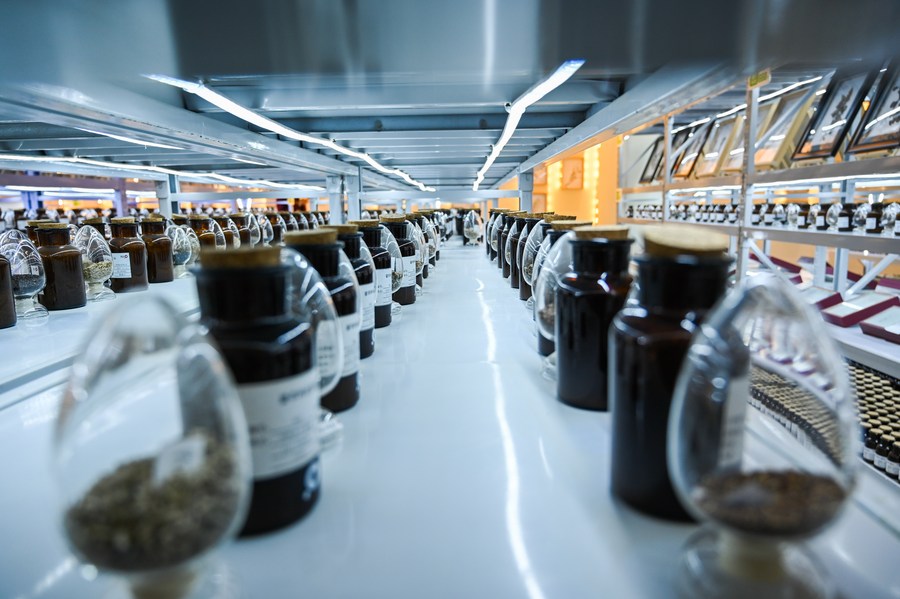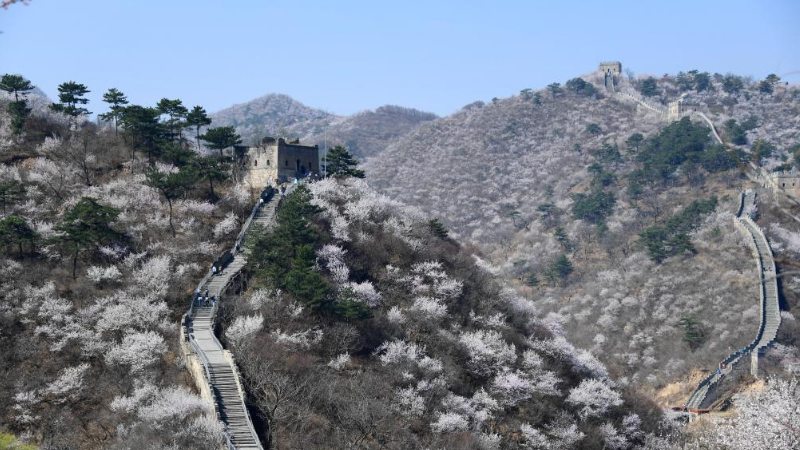
Photo taken on Sept. 9, 2021 shows an interior view of the bank of native plant germplasm resources of Inner Mongolia M-grass Ecology and Environment (Group) Co., Ltd., in Hohhot, north China's Inner Mongolia Autonomous Region. (Xinhua/Liu Lei)
TIANJIN, April 5 (Xinhua) -- In the sci-fi blockbuster "The Wandering Earth," scientists refrigerated 100 million seeds of basic crops inside the space station and stored DNA maps of global plants and animals.
In the real world, where rapid loss of germplasm resources has become a notably urgent challenge, China is building a number of germplasm resources banks aiming to preserve the diversity of species.
In the Tianjin Agricultural Germplasm Resources Bank, researcher Wang Lu was working on the examination of the germination rate and water content of corn and soybean seeds, as the bank recently received more than 500 new germplasm resources.
The crop germplasm resources are cultivated plant genetic materials with genetic functions, which play an important role in both food security and original innovation of agricultural science and technology, said Lan Qingkuo, deputy director of the Institute of Germplasm Resources and Biotechnology under the Tianjin Academy of Agricultural Sciences.
"There are eight different banks in which agricultural germplasm resources are conserved in a low-temperature and constant humidity environment," noted Wang, while packing the seeds in different aluminum foil bags with two-dimensional codes.
"The seeds' information, including types and sources, can be quickly read after scanning codes, providing great convenience for follow-up research work," Wang added.
Species extinction is an urgent universal problem facing the world at present, said Cui Shuhong, an official with the country's Ministry of Ecology and Environment.
The Food and Agriculture Organization of the United Nations estimates that 75 percent of crop diversity has been lost since the beginning of the 20th century.
Although some old varieties of certain crops provided low yield and had poor resistance, they had been well-received for their good taste.
If these germplasm resources can be properly conserved, it can help in scientific areas such as genotype identification and species evolution study, and also contribute to future cross breeding of new varieties featuring delicious taste and high yield.
Agricultural germplasm resources in China available for long-term conservation have exceeded 520,000, ranking second globally in total conservation quantity.
"On the basis of extensive collection of germplasm resources, we will be able to deeply analyze its genotype and phenotype data in the future, and employ big data and biological breeding technology to combine traits and genes to design and cultivate new seeds that meet specific needs," Lan said.
Numerous treasure troves of germplasm resources have been established across China. At the Chinese Academy of Agricultural Sciences, a new national crop germplasm bank has been built, including sections featuring low temperature and ultra-low temperature environments.
The germplasm resources banks across the country will focus on germplasm resource conservation and science research and innovation, contributing to genetic diversity conservation and sustainable development, according to Lan. ■












